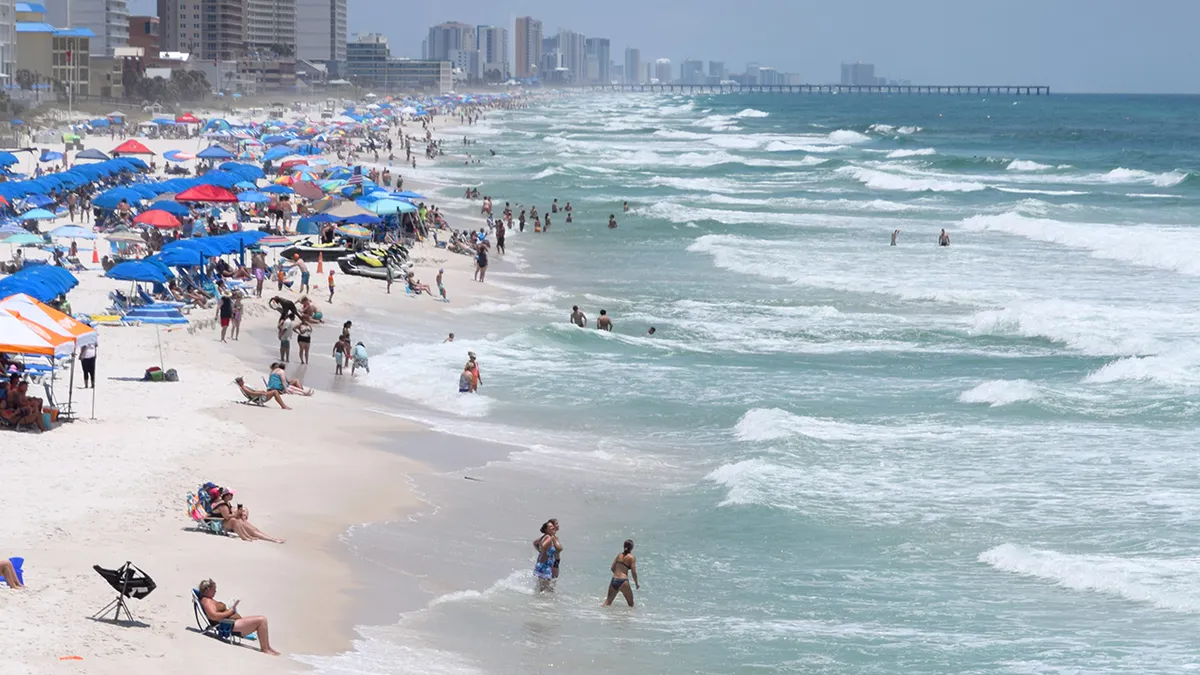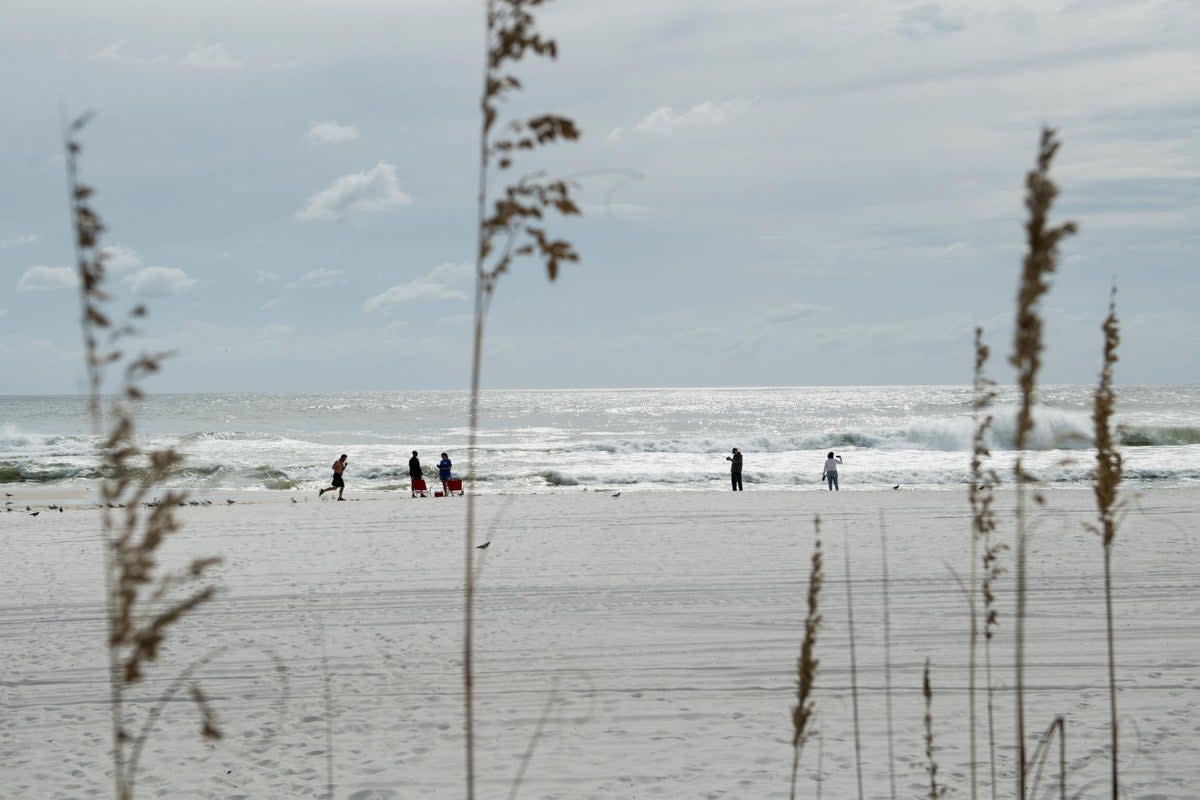Understanding Rip Currents

Panama city beach rip current – Rip currents are powerful, narrow channels of fast-moving water that flow away from the shore. They are often found near jetties, piers, and other structures that disrupt the normal flow of waves.
The infamous rip currents of Panama City Beach can be a deadly force, pulling unsuspecting swimmers out to sea. These powerful currents, caused by the interaction of waves and the underwater topography, can be difficult to spot and even more difficult to escape.
To understand the dangers of rip currents, it’s crucial to know what a rip current is and how to identify them. By recognizing the signs and taking precautions, beachgoers can enjoy the beauty of Panama City Beach without falling victim to its treacherous currents.
Rip currents are formed when waves break near the shore and the water rushes back towards the sea. Some of this water is pushed back towards the beach, while some of it is pulled back out to sea. The water that is pulled back out to sea is what creates the rip current.
Panama City Beach’s alluring waters conceal a treacherous danger – rip currents. These powerful currents can swiftly carry even experienced swimmers away from the shore. Tragically, drowning incidents have occurred due to rip currents. Staying vigilant and understanding the signs of rip currents is crucial for beachgoers to ensure a safe and enjoyable time at Panama City Beach.
Characteristics and Dangers of Rip Currents
Rip currents can be very dangerous. They can quickly pull swimmers away from the shore and out to sea. Rip currents are often difficult to see, and they can even occur on days when the water is calm.
The serene shores of Panama City Beach conceal a hidden danger lurking beneath its azure waters. Rip currents, powerful underwater currents, can swiftly drag unsuspecting swimmers out to sea. To avoid these treacherous currents, it is crucial to stay informed and heed the warnings of lifeguards.
Panama City Beach rip current safety guidelines provide valuable information on how to identify and escape these dangerous currents, ensuring a safe and enjoyable beach experience.
The following are some of the characteristics of rip currents:
- They are narrow channels of fast-moving water that flow away from the shore.
- They are often found near jetties, piers, and other structures that disrupt the normal flow of waves.
- They can be difficult to see, even on days when the water is calm.
- They can quickly pull swimmers away from the shore and out to sea.
If you are caught in a rip current, do not panic. Stay calm and try to swim parallel to the shore. Once you are out of the rip current, swim back to shore.
Tips for Identifying and Avoiding Rip Currents
The following are some tips for identifying and avoiding rip currents:
- Look for breaks in the line of waves.
- Look for areas where the water is choppy or turbulent.
- Look for areas where the water is flowing away from the shore.
- Avoid swimming near jetties, piers, and other structures that disrupt the normal flow of waves.
Panama City Beach’s Rip Current Statistics
Panama City Beach, a popular tourist destination on the Florida Gulf Coast, has a notorious reputation for its strong rip currents. These powerful currents can quickly pull even experienced swimmers away from the shore, posing a significant safety risk.
According to data from the National Weather Service, Panama City Beach experiences an average of 100 rip current incidents per year, resulting in approximately 10 to 15 fatalities. These numbers are significantly higher than other popular beach destinations, such as Daytona Beach and Virginia Beach, which average around 50 and 25 rip current incidents per year, respectively.
Impact on Tourism and Safety
The high frequency and severity of rip currents in Panama City Beach have a significant impact on tourism and safety. The fear of rip currents can deter tourists from visiting the beach, resulting in lost revenue for local businesses. Additionally, the high number of rip current incidents places a strain on lifeguards and emergency responders, who must constantly monitor the water and respond to emergencies.
Safety Measures and Education: Panama City Beach Rip Current

Panama City Beach authorities have implemented a comprehensive range of safety measures and educational programs to mitigate rip current risks. These initiatives aim to inform beachgoers about the dangers of rip currents and provide them with the knowledge and skills necessary to stay safe in the water.
Safety Measures, Panama city beach rip current
Lifeguards are stationed along Panama City Beach during peak season to monitor for rip currents and assist swimmers in distress. Warning signs are posted throughout the beach, alerting beachgoers to the presence of rip currents and providing instructions on how to escape if caught in one.
Educational Programs
Panama City Beach offers a variety of educational programs to inform beachgoers about rip currents. These programs include:
- Rip Current Awareness Talks: Lifeguards give presentations to beachgoers about rip currents, their dangers, and how to avoid them.
- Brochures and Pamphlets: Informative brochures and pamphlets about rip currents are distributed to beachgoers at lifeguard stations and other public locations.
- Social Media Campaigns: Panama City Beach uses social media platforms to share information about rip currents and promote safety tips.
Additional Safety Measures and Educational Initiatives
In addition to the existing safety measures and educational programs, several additional initiatives could enhance rip current prevention in Panama City Beach:
- Install Rip Current Detection Systems: Deploying advanced rip current detection systems can provide lifeguards with early warnings of rip currents, allowing them to respond more quickly and effectively.
- Increase Lifeguard Presence: Increasing the number of lifeguards on duty, especially during peak season, would enhance surveillance and provide more immediate assistance to swimmers in distress.
- Develop Educational Videos: Creating engaging and informative videos about rip currents can reach a wider audience and provide a visually appealing way to educate beachgoers.
Panama City Beach rip currents can be treacherous, so it’s important to be aware of the panama city beach flag today before heading into the water. The flag system provides valuable information about the current conditions, and it can help you make informed decisions about whether or not it’s safe to swim.
Always remember to check the flag before you get in the water, and be sure to follow the instructions of the lifeguards.
The relentless rip currents of Panama City Beach have claimed another life. An Alabama man drowned while swimming in the treacherous waters, a tragic reminder of the dangers lurking beneath the seemingly idyllic surface. These powerful currents, capable of sweeping even experienced swimmers out to sea, have made Panama City Beach one of the deadliest beaches in the United States.
